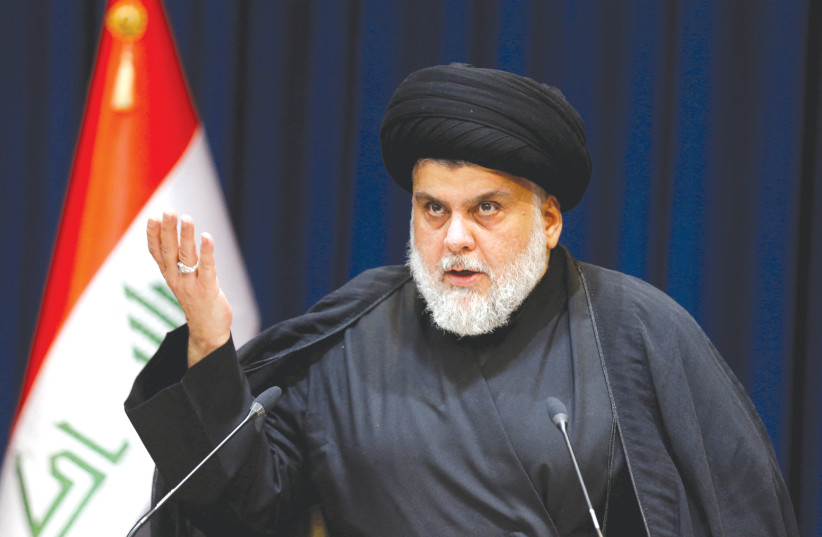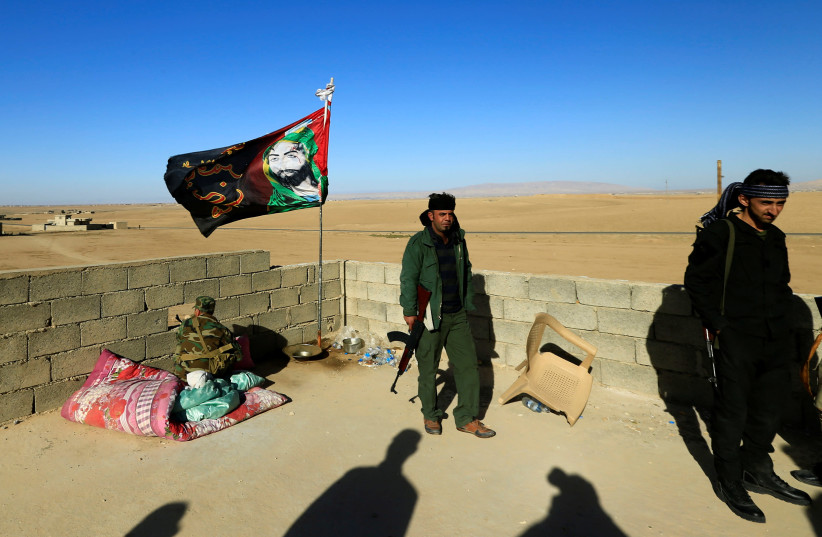NEVILLE TELLER

When Western politicians announce they are retiring, their supporters normally express regret and wish them well. Iraq (to misquote the well-known aphorism) is a foreign country – they do things differently there.
When the powerful Shia leader Muqtada al-Sadr announced his “final retirement” from politics on August 29, his supporters took to the streets and subjected Baghdad to its worst bout of violence in years. Many of his followers had been holding a sit-in inside Baghdad’s Green Zone, where government offices and diplomatic missions are located. Hearing their leader’s decision, they scaled the gates of the Republican Palace that used to be Sadam Hussein’s powerhouse, paraded through it, sharing the scenes on social media.
Soon afterward, sounds of live ammunition echoed around the streets as Iran-backed opponents of al-Sadr, including the security forces, descended on the protesters. The two sides traded gunfire all night and well into the next morning, and at least 47 people were killed.
What is not entirely clear is what motivated al-Sadr’s supporters. By protesting their leader’s decision, were they trying to get him to change his mind? After all, he had threatened to retire from politics on eight previous occasions, and relented. Were they simply letting off steam, frustrated at the possibility of losing their leader? Or were they expressing their resentment at the establishment that had forced al-Sadr to this extremity?
Here’s one explanation: Many of al-Sadr’s followers were adherents of Iraq’s Shia spiritual leader, Grand Ayatollah Kadhim al-Haeri. Suddenly and surprisingly, on Sunday, August 28, al-Haeri announced his resignation, encouraging his followers to support Iran’s Supreme Leader, Ayatollah Ali Khamenei. But al-Sadr’s political message – Shia though he is – is to oppose the excessive influence on Iraq’s internal affairs by both Iran and the US. Their erstwhile spiritual leader’s defection to the pro-Iranian sector may have left al-Sadr’s supporters feeling betrayed.
 Members of a Shia militia guard a house in Iraq. The new NDAA warned about the presence of Iranian-backed militias (credit: REUTERS)
Members of a Shia militia guard a house in Iraq. The new NDAA warned about the presence of Iranian-backed militias (credit: REUTERS)The violence that ensued led influential Iraqi voices to express fears that a Shia-Shia civil conflict was about to erupt, but the pessimists had reckoned without the extraordinary influence al-Sadr exercises over his followers, even though it has been demonstrated more than once. On August 30 al-Sadr went on television and called on his supporters to withdraw “within an hour” from the Green Zone. “I apologize to the Iraqi people,” he said.
The armed group backing him, Saray al-Salam, made no use of the hour’s grace their leader had allowed them. They left the Green Zone within minutes, bringing calm to what had turned into a battlefield. If the whole episode illustrated anything, it is the enormous power that al-Sadr exercises over the thousands who support him.
In a conciliatory gesture, he offered the Coordination Framework some government seats. They refused to be conciliated. Al-Sadr reacted by requiring all 74 of his bloc to resign their parliamentary seats, and his supporters staged protests and sit-ins in the Green Zone.
Under Iraqi law, if an MP resigns, the second-placed candidate in the election takes the empty seat. The process of filling the Sadrists’ vacated seats led to a new wave of intense controversy, but finally the pro-Iran Coordination Framework became the majority group in parliament. It then nominated Mohammed Shia al-Sudani as prime minister.
Iran-backed groups and militias welcomed the nomination; al-Sadr and his followers rejected it out of hand. On July 27, the country’s political crisis reached boiling point and al-Sadr supporters stormed the Iraqi parliament protesting against al-Sudani’s nomination. Once again, a tweet from al-Sadr quelled the riot instantly.
In his latest televised address al-Sadr, despite taking some responsibility for the recent flare-up, condemned the violence by his supporters but refused any compromise. He declared that he would block any attempt by the Coordination Framework to impose their nominated prime minister on the nation, or set up a functioning government without his input.
On September 3, the Coordination Framework responded. It reiterated its determination to nominate al-Sudani as Iraq’s prime minister. Moreover, according to media reports, the Framework is planning to resume parliamentary sessions following the Shia religious commemoration of Arba’een, on September 17.
Iraq’s political stalemate stems ultimately from the constitutional arrangements put in place by the US following the overthrow of Saddam Hussein. It is a sectarian system, loosely akin to Lebanon’s, intended to ensure that the various minority groups that make up Iraqi society are given a share in government and the administration. As in Lebanon, the end result has been endless political instability and dysfunction, which is why al-Sadr has been calling for constitutional reform.
A dedicated user of social media, in recent tweets he has called on Iraqis “to rise up to demand reform.” He has characterized the protests mounted by his supporters – even though he has himself brought them to an end – as “a major opportunity to radically change the political regime, constitution and elections.”
The problem is that the stage seems set for yet another armed civil conflict, with no assurance that this time it can be switched off with a click of al-Sadr’s fingers. The disputing sides refuse negotiation and compromise. Moreover, the violence is not confined to Baghdad.
During the last uprising, al-Sadr’s supporters blocked roads and government buildings elsewhere in Iraq, including Basra in the south where general lawlessness, organized crime and tribal conflicts are a prime breeding ground for uncontrollable armed struggle. Iraq is facing the real danger of a Shia-Shia civil war.
No comments:
Post a Comment